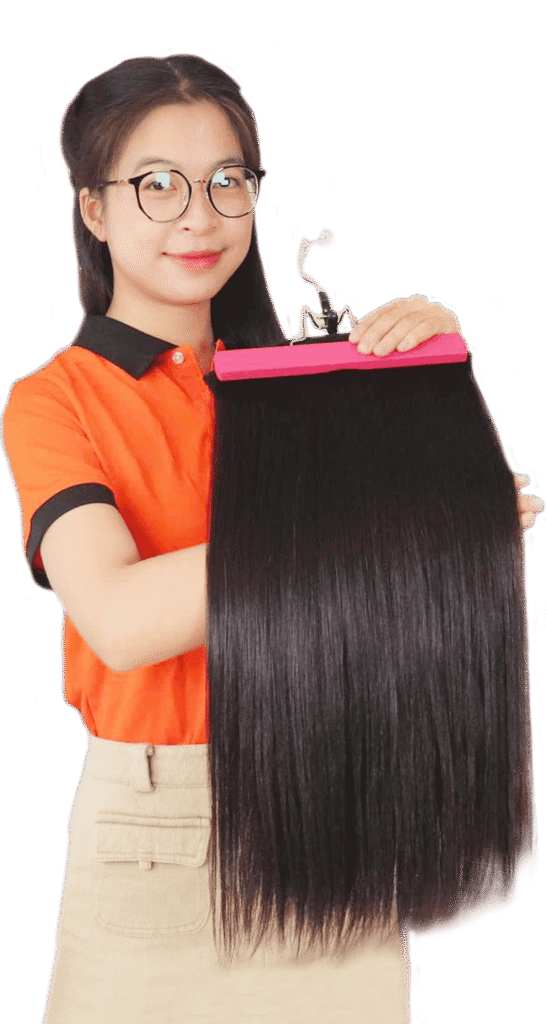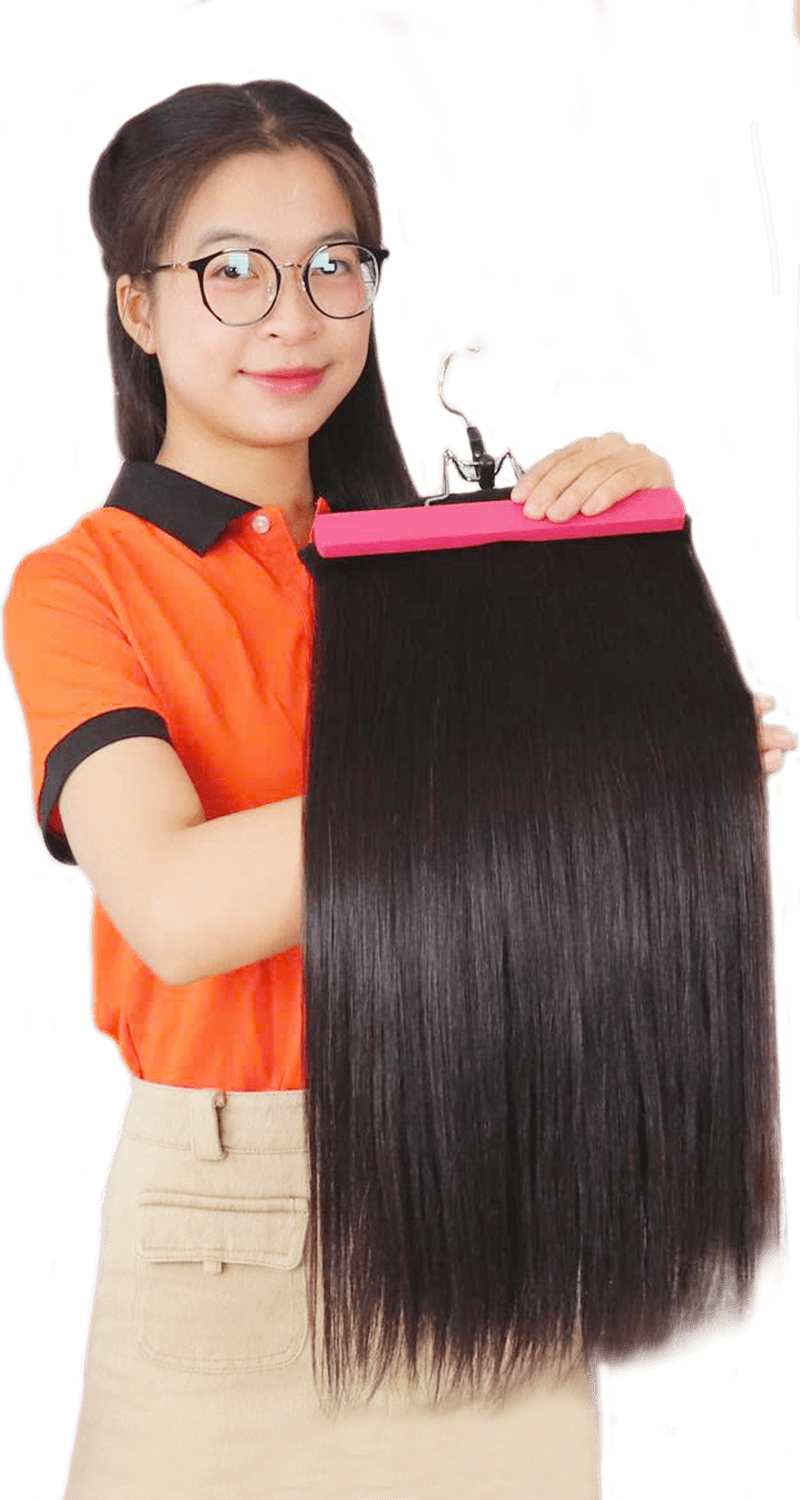Hair extensions have become essential for many, adding volume and length in minutes and opening up endless styling possibilities. If you’re considering hair extensions, you’re likely weighing options like clip-in hair extensions vs tape-in. These two popular choices offer different benefits depending on lifestyle, hair goals, and maintenance preferences. Each method has its unique benefits, and knowing the differences can help you choose the one that best suits your lifestyle, hair type, and desired look. Here, we’ll break down everything you need to know about clip-in and tape-in hair extensions, from ease of use to durability, to help you make an informed decision.
I. Understanding Clip-In Hair Extensions:
Clip-in hair extensions are one of the most popular and user-friendly options available today. These extensions come in individual wefts with small clips attached, allowing you to snap them into your natural hair without any adhesives or professional installation. Here’s a closer look at the pros and cons of clip-in extensions:
1. Pros of Clip-in Hair Extensions
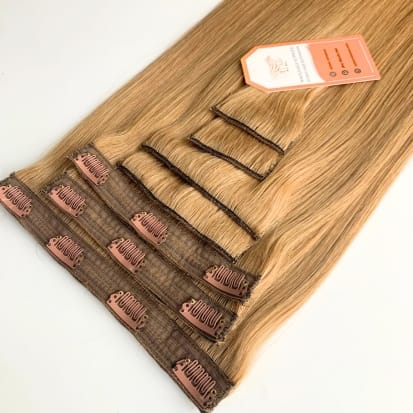
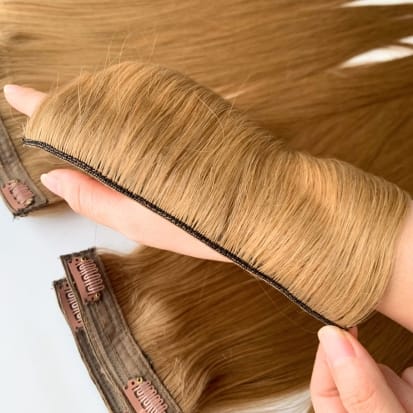
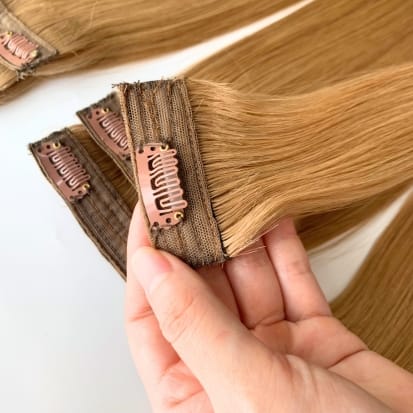

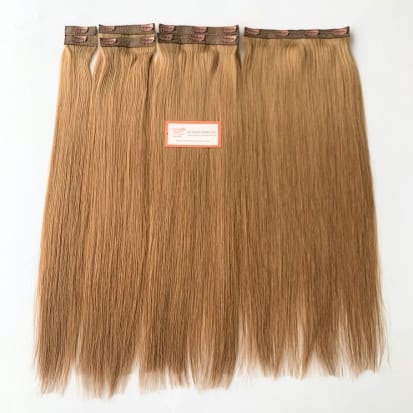
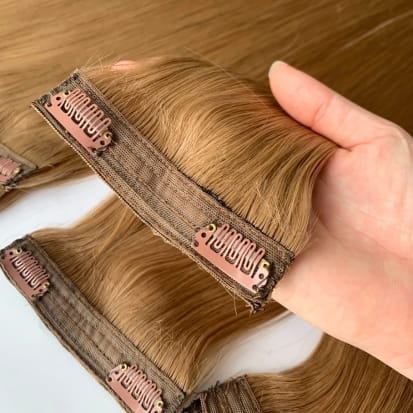
- Quick and Easy to Apply: Clip-ins can be applied at home without professional assistance, saving time and cost.
- Temporary Wear: They can be removed and reapplied at any time, making them perfect for events or special occasions.
- Non-Damaging: Since no adhesive is involved, clip-ins don’t damage the hair or scalp when applied and removed properly.
- Variety of Styles: Available in various lengths, colors, and styles, they allow for easy experimentation and quick transformations with length, volume, and color.
- Non-Commitment: Great for occasional use, giving you the flexibility to change your look without the long-term commitment.
2. Cons of Clip-In Hair Extensions
- Can Feel Heavy: Clip-ins might feel heavy if you have fine or thin hair. They can slide out if not secured properly, especially in thin or fine hair.
- Not Ideal for Daily Use: Clip-ins are not suitable for wearing overnight or during certain physical activities. Wearing them daily may lead to discomfort and potential tension in your hair.
- Less Seamless Appearance: They can be more challenging to conceal, especially in finer hair.
- Daily Maintenance: Requires daily removal and reapplication, which may be time-consuming for some users.
II. Deep Dive into Tape-In Hair Extensions:
Tape-in extensions are semi-permanent options that are taped to sections of your natural hair. They offer a more long-term solution than clip-ins and are often chosen for their seamless look. Tape-in extensions are applied by sandwiching sections of your natural hair between two adhesive wefts. Here’s what to consider:
1. Pros of Tape-in Hair Extensions
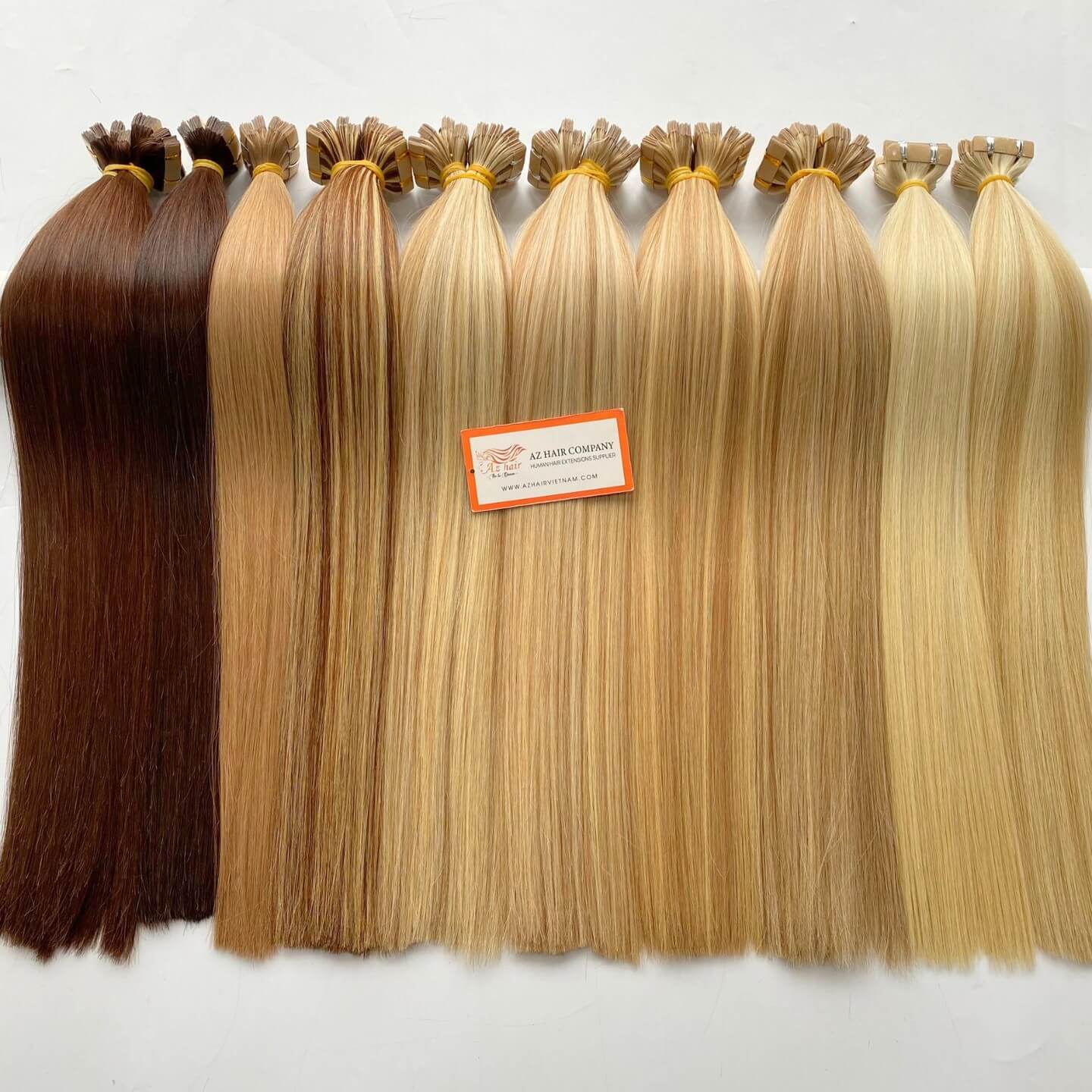



- Natural Look: Tape-ins lie flat against the scalp, making them undetectable and giving a natural, seamless look.
- Long-Lasting: With proper care, tape-in extensions can last 6-8 weeks, making them ideal for people looking for a semi-permanent solution.
- Lightweight and Comfortable: Tape-ins are light and comfortable, even for people with fine hair, and cause minimal stress to the scalp.
2. Cons of Tape-in Hair Extensions
- Requires Professional Application and Removal: Installing and removing tape-in extensions often requires professional installation to ensure proper placement and durability, adding to the overall cost.
- Limited Styling Options: Avoid styles that expose the tape strips, limiting some styling options.
- Maintenance: You need regular maintenance appointments for repositioning as your natural hair grows.
III. Clip-In Hair Extensions vs Tape-In: A Head-to-Head Comparison
When choosing hair extensions, understanding the differences between clip-in and tape-in options can help you select the best match for your needs. Here’s a breakdown of these popular types of hair extensions:
Clip-In Hair Extensions vs Tape-In #1: Installation Process
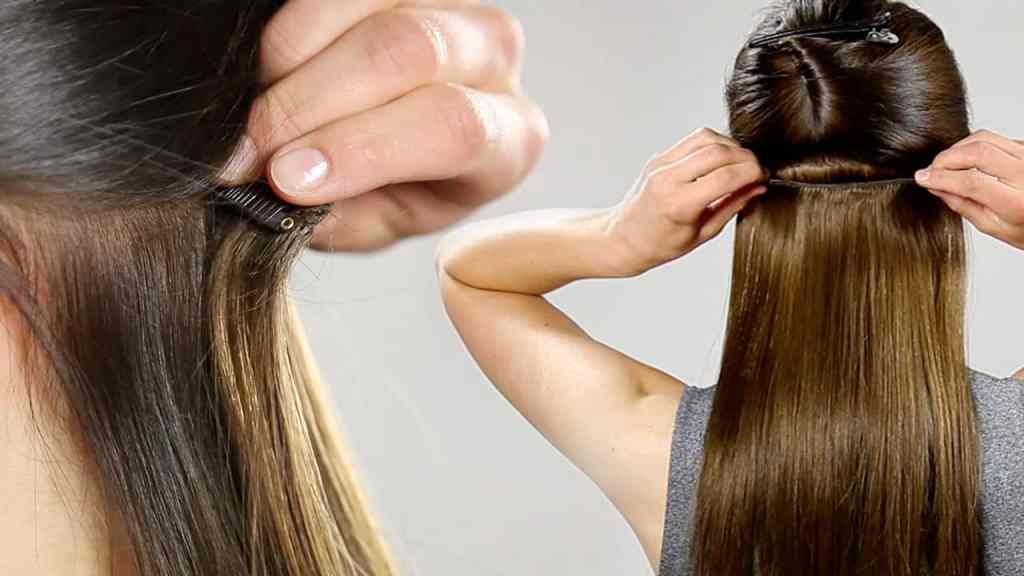
Applying clip-in extensions is straightforward. You simply part your hair, clip in the extensions near the roots, and blend them with your natural hair. Most people can apply clip-ins in under 10 minutes, making them ideal for occasional or spontaneous styling. Installation clip-in is non-damaging if worn occasionally, but prolonged daily use can strain the hair. Curious about how to install clip-in hair extensions? Read now our dedicated blog: How To Install Clip-In Hair Extensions.
While applying tape-in extensions requires sectioning the hair and placing the adhesive strips close to the scalp. The installation usually takes about 1-2 hours and is best done by a professional to ensure seamless blending. Generally safe when applied correctly, but improper removal could cause breakage.

#2: Wear Time and Longevity
Clip-in extensions are designed for temporary use, they’re ideal for events or weekends. You’ll need to remove them before bed to avoid damage to your natural hair. Tape-in extensions, on the other hand, are more long-term and can last 6 – 8 weeks before requiring a touch-up or reapplication, making them suitable for everyday wear.
Clip-In Hair Extensions vs Tape-In #3: Styling Versatility


Since clip-in extensions are removable, you have the flexibility to experiment with different lengths, colors, and volumes without commitment. While tape-in hair can blend seamlessly with your natural hair when left down, but requires styles that conceal adhesive strips.
#4: Maintenance Requirements
Clip-in extensions are low maintenance as you can clean them as needed. Simply store them properly to prolong their lifespan. While tape-in hair requires regular maintenance, including careful washing and conditioning to avoid weakening the adhesive strips and touch-ups every 4–8 weeks to keep them looking fresh.
#5: Cost

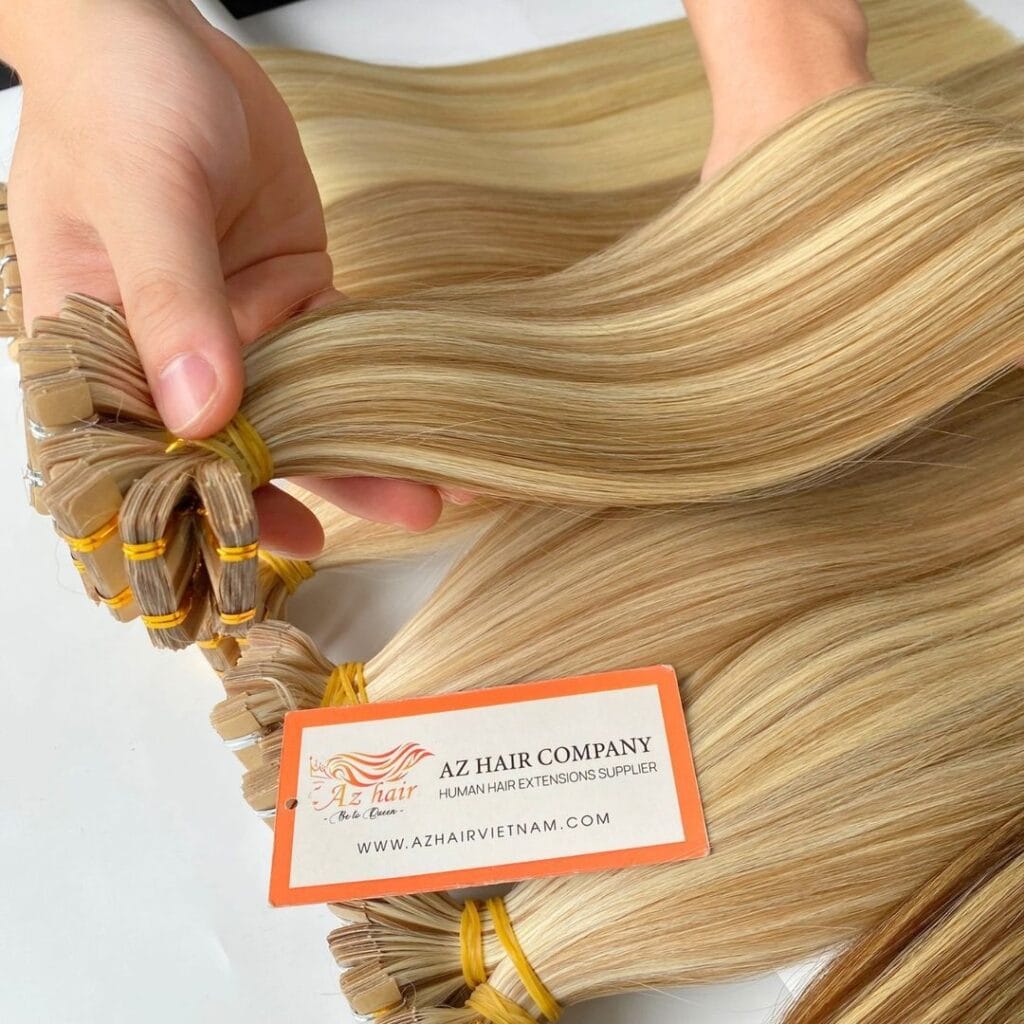
Clip-in extensions are generally more affordable due to their temporary nature and DIY installation. Tape-in extensions, on the other hand, are more expensive, as the initial application and periodic reapplications require professional salon services.
IV. Which Extension is Right for You? A Quick Decision Guide
Both clip-in and tape-in extensions have their unique benefits and deciding between clip-in and tape-in hair extensions ultimately comes down to your personal preferences, lifestyle, and maintenance expectations. Here is a quick guide to help you:
1. Choose Clip-In Hair Extensions If:


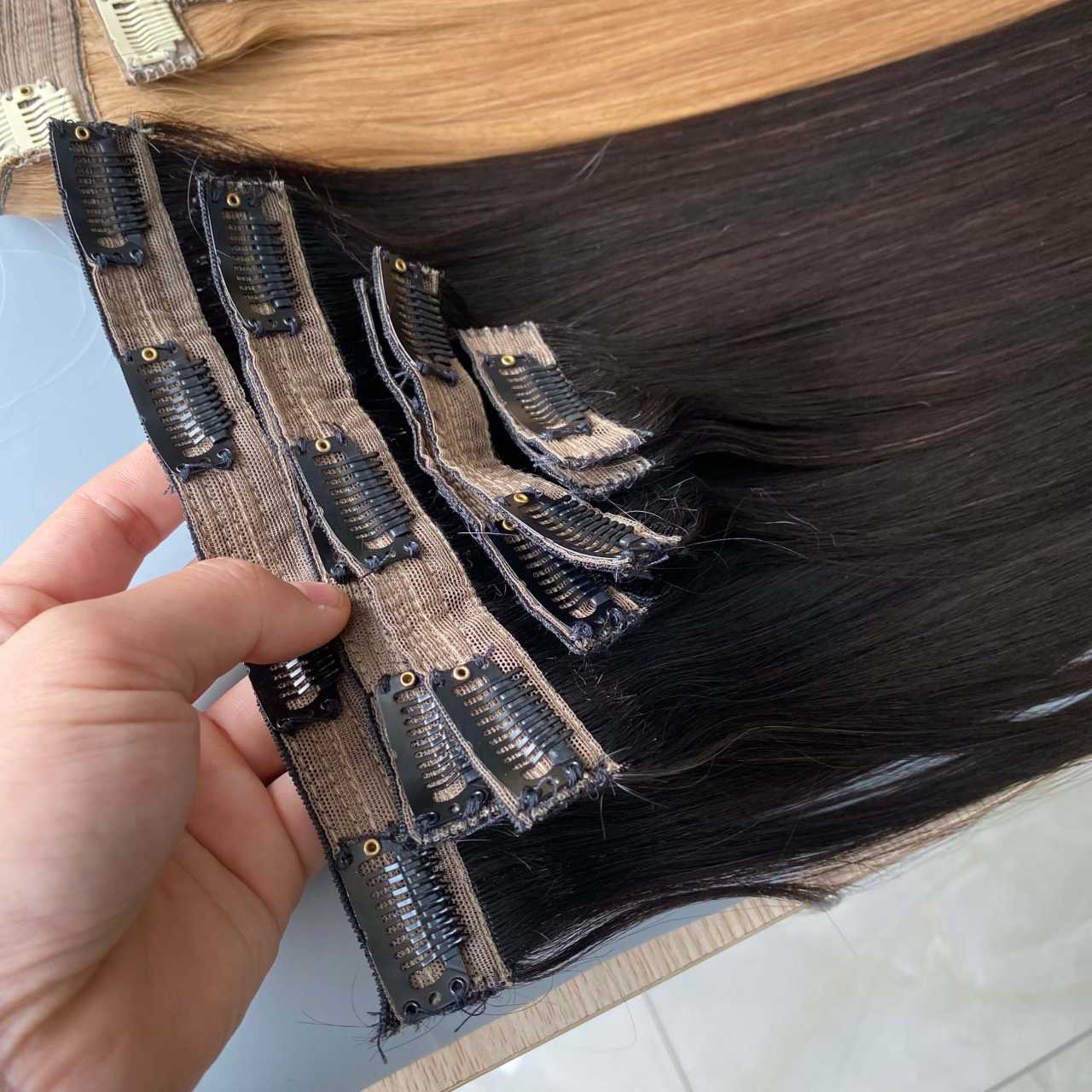
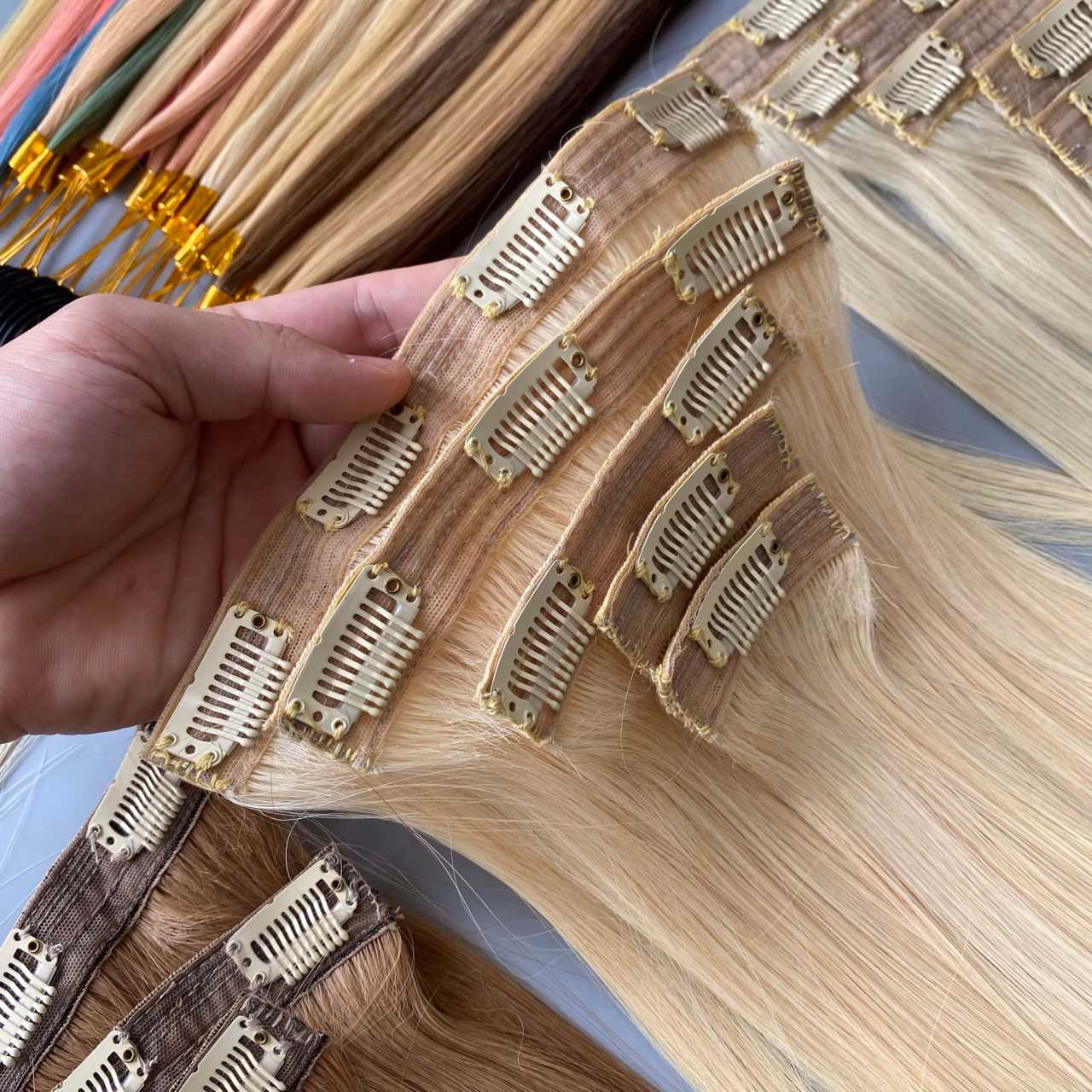

- You’re looking for a temporary option.
- You want to apply and remove the extensions at your convenience.
- You’re on a budget and prefer a lower-cost option.
- You want extensions for occasional use rather than daily wear.
2. Choose Tape-In Hair Extensions If:

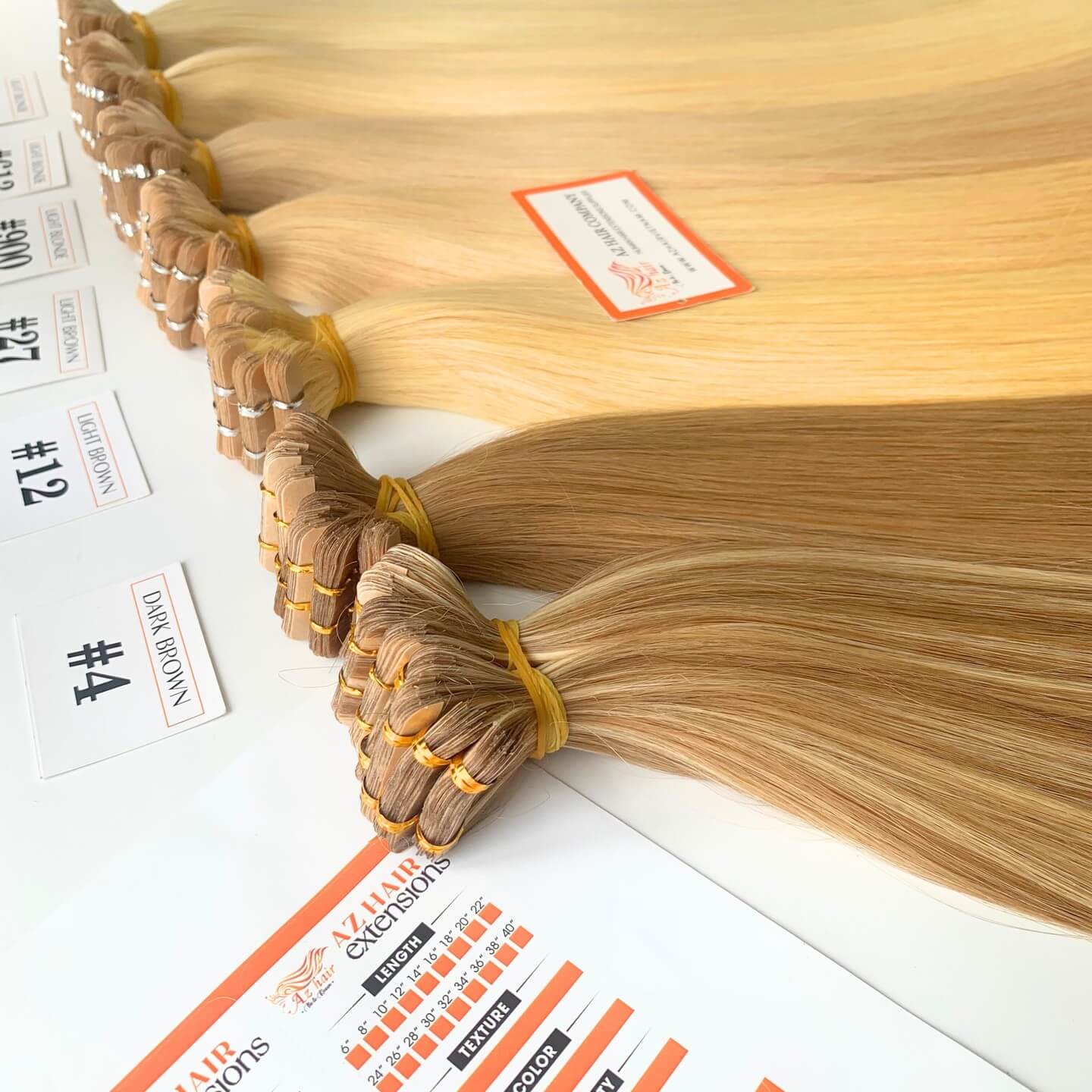
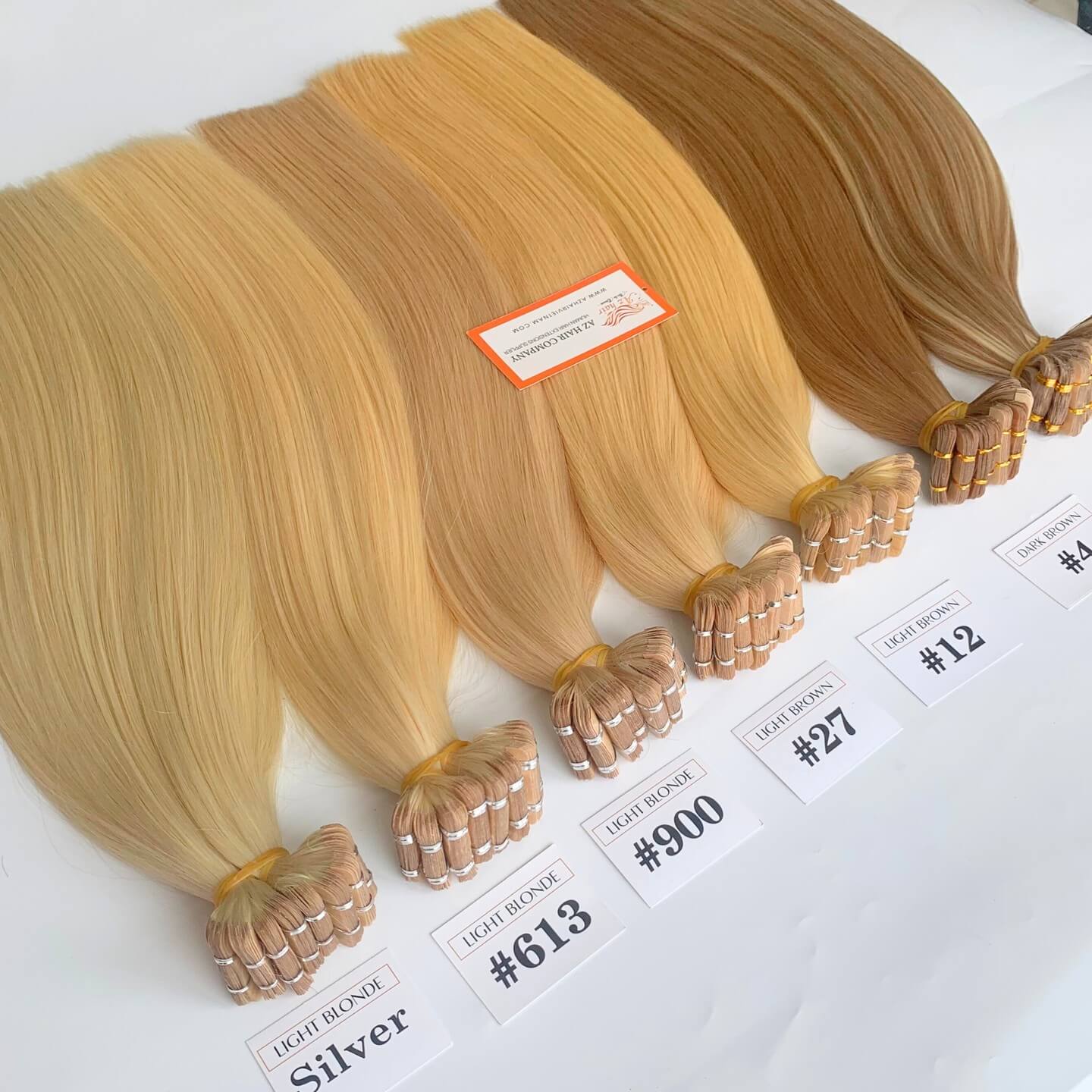
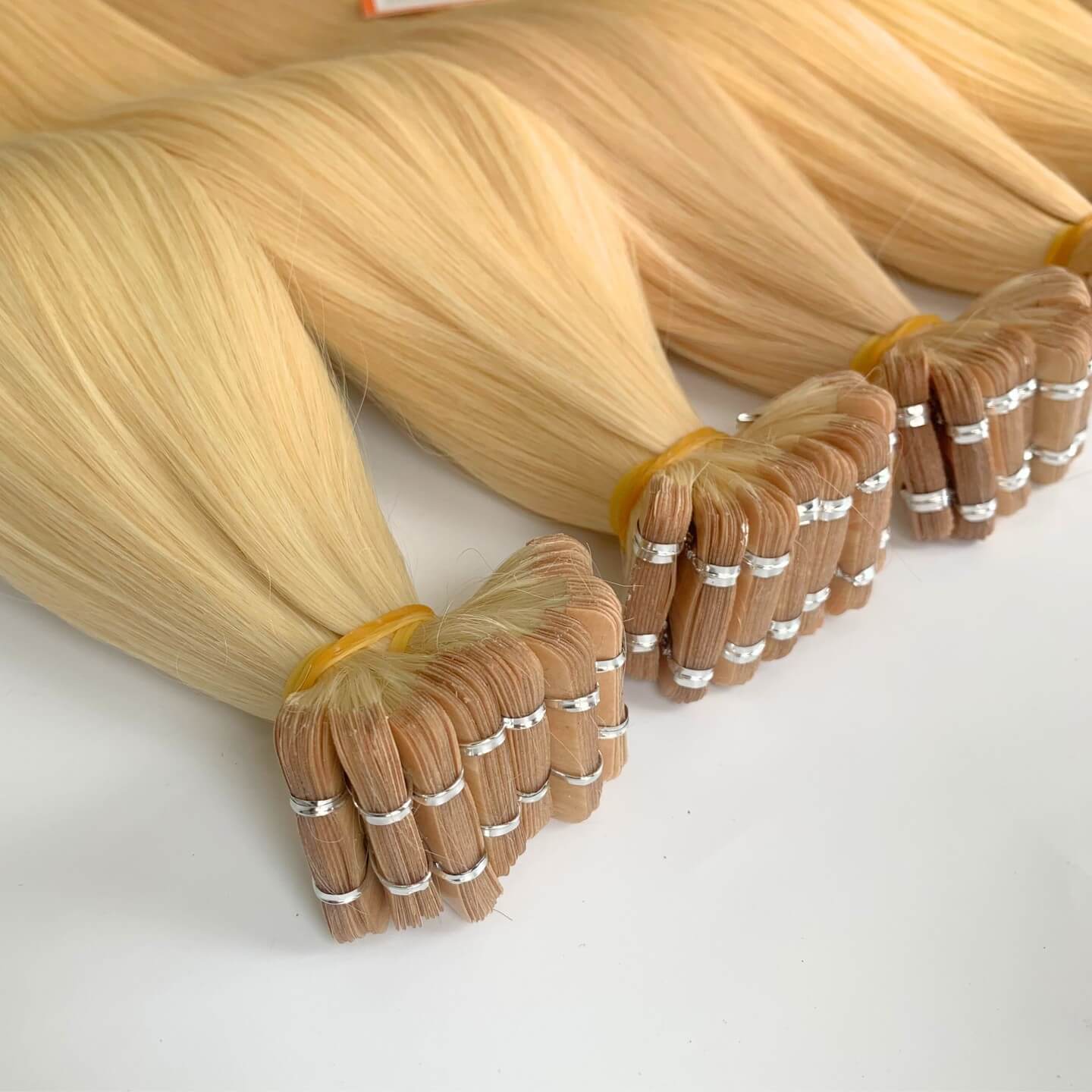
- You want a natural, semi-permanent solution.
- You prefer a low-maintenance style that doesn’t require daily removal.
- You’re willing to invest in professional application and removal for a seamless appearance.
- You want an extension that is lightweight and comfortable for fine hair.
V. Conclusion
By weighing the pros, cons, and maintenance factors of each, you can confidently select the type that suits your hair goals and daily routine best. If you are seeking a dependable hair provider with many years of professional experience, you can contact AZ Hair. Operation experience in the hair business for more than 17 years, AZ Hair is proud to be one of the best Vietnamese organizations in hair manufacturers and trading Vietnamese human hair across the globe. We are proud to be the first Vietnamese hair company that has been verified by Alibaba – a major player in the B2B eCommerce space.
FAQ: Clip-In Hair Extensions vs Tape-In
The best choice depends on your lifestyle, desired maintenance level, and budget. Tape-ins provide a more natural, long-lasting look, while clip-ins offer flexibility and easy application.
Clip-ins can last up to a year or more with occasional use, while tape-ins typically last around 6-8 weeks before needing adjustment.
Yes, both clip-ins and tape-ins can be styled with heat, but using a heat protectant is essential to prevent damage.
While clip-ins have a lower upfront cost, they may require replacement sooner if used frequently. Tape-ins require an initial investment plus the cost of maintenance appointments, making them more costly over time.
It’s recommended to have a professional stylist install tape-in extensions to ensure proper placement and longevity.
Clip-in extensions should only be washed after every 15-20 wears, or when they appear dirty or tangled. You can refer to this post to get the instructions on how to wash clip-in hair extensions!
Tape-in extensions are often better for thin hair, as they lie flat and provide a seamless blend. You can click HERE to explore the best hair extensions for thin hair!


 BEST SELLING PRODUCTS
BEST SELLING PRODUCTS Wig Hair
Wig Hair WHOLESALE
WHOLESALE Contact us
Contact us Sale Events
Sale Events